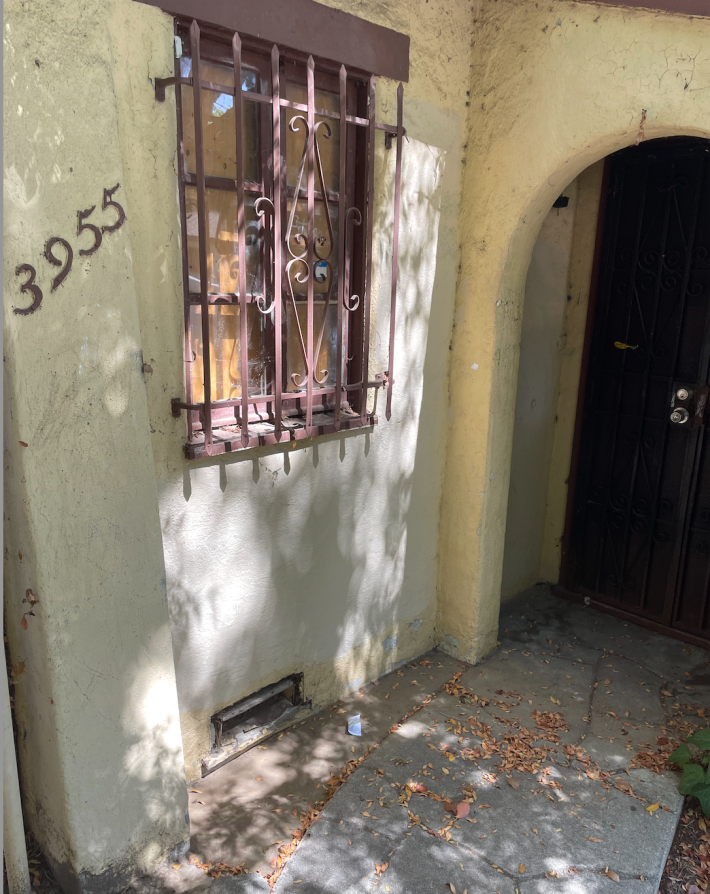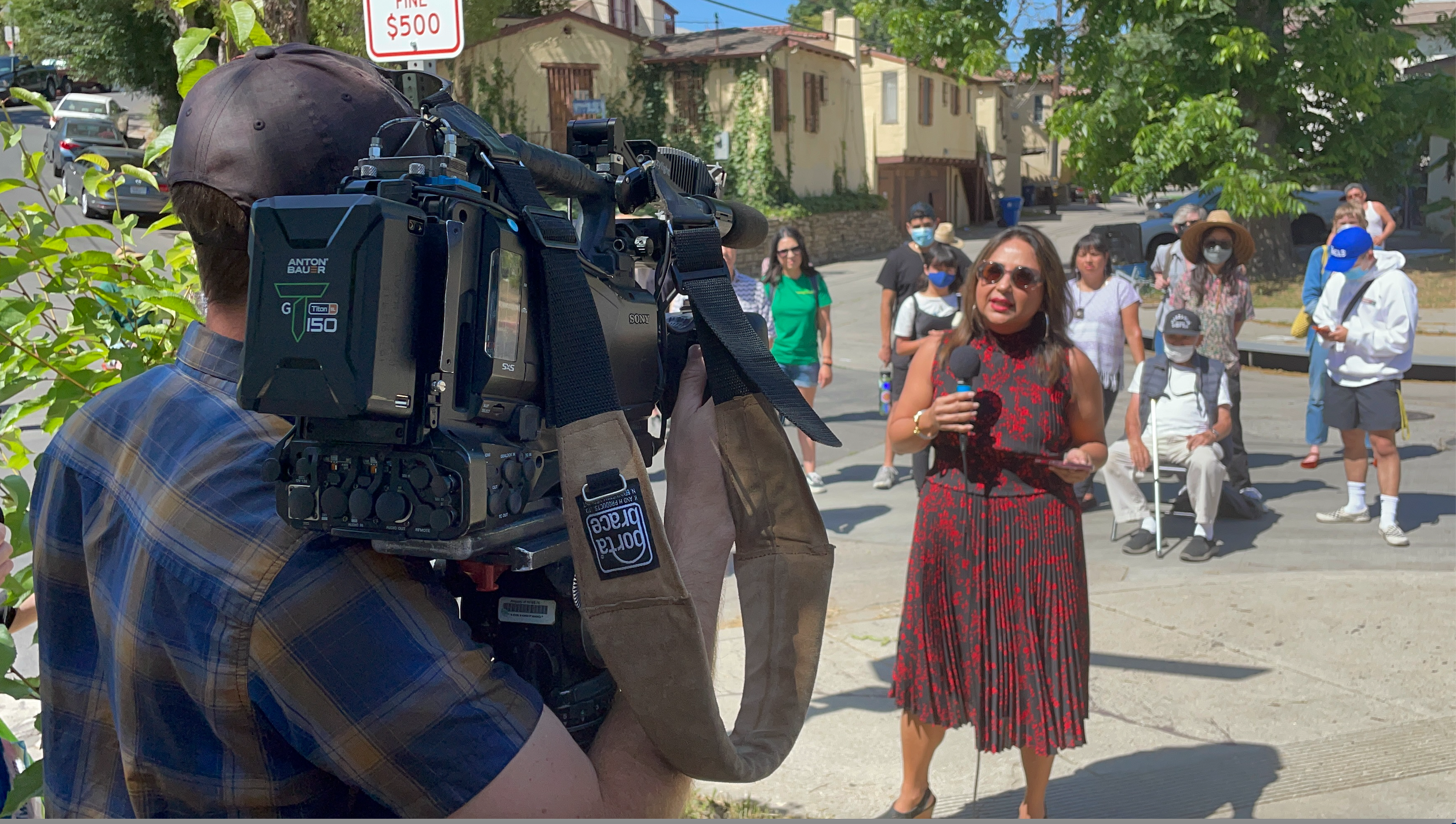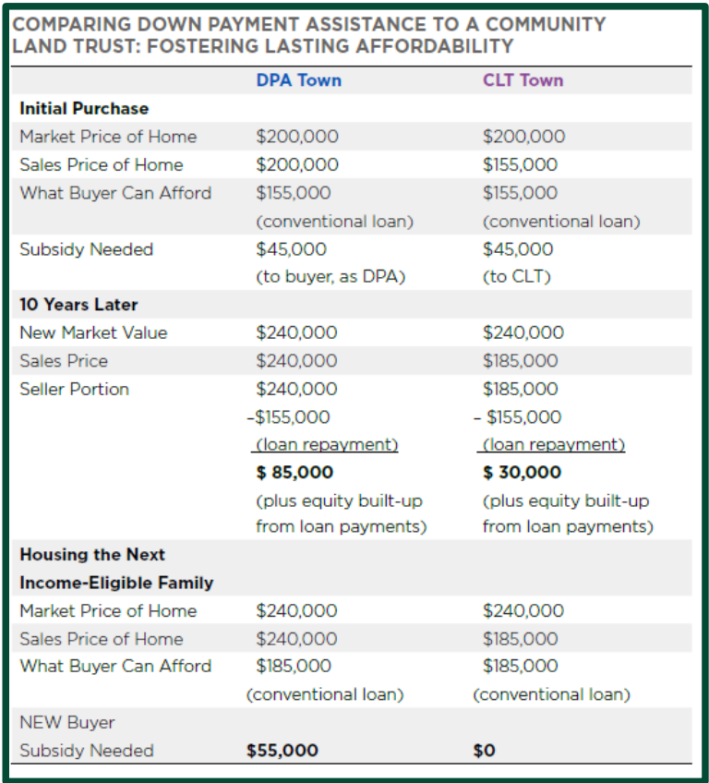"Fight, fight, fight! Housing is a human right!"
An organizer for the nonprofit El Sereno Community Land Trust led the 30 or so community activists in this chant at a press event yesterday morning highlighting the community's efforts stay in houses they've lived in for years while Caltrans slowly releases the grip it has held on the community for decades. Caltrans purchased 500 homes in the 1970s to make way for 710 Freeway expansion in Los Angeles, Alhambra, South Pasadena and Pasadena. Over half of them are in the Los Angeles community of El Sereno.
Two visions are being offered for the properties in Los Angeles:
- Vision El Sereno has been proposed by the city of Los Angeles and would create 252 units of affordable rental housing and not touch housing with existing Caltrans renters
- Community Resources in Community Care is a different plan being put forward by the El Sereno Community Land Trust that would purchase as many of the properties as possible, keep the current tenants housed in them, and give ownership to the tenants through the land trust.
Caltrans has not announced a date for when these proposals will be considered nor when the agency will officially sell the properties it is holding in El Sereno.
With the North 710 expansion officially dead since 2017, Caltrans is finally beginning the process of selling the residential properties they owned within what would have been the right-of-way for the expanded highway. However, changes to state law that happened last year have muddied the process for existing renters who believed they would have the first opportunity to purchase the properties where they lived.
These changes have been a precursor to a battle that is brewing between the city's housing authority and the Land Trust over competing visions for the community. The city sees an opportunity to purchase property at a cut rate and create hundreds of units of affordable housing. The existing residents are hopeful that through a land trust they will be able to create permanently affordable housing and home ownership for existing residents, be they Caltrans tenants or 'Reclaimers' that moved in to vacated and abandoned properties in the early days of the pandemic. Reclaimers were given a two year contract to stay in these properties that expires in a couple of weeks.
In the '70s, when Caltrans purchased properties with the plan to extend the 710 Freeway through these communities, the agency did so under the authorization of the Roberti Act. Roberti allowed Caltrans to purchase the property while also requiring the agency to grant qualified tenants – previous owner/occupants and present occupant/renters that had lived in the homes for a certain amount of time (including those that had formed a co-op) – the opportunity to purchase the property, should the 710 Freeway not be built.
But last year the state legislature and Governor Newsom changed that for El Sereno, and only El Sereno, by passing S.B. 51. While Roberti gave existing residents preference in purchasing properties from Caltrans and had a role for what they call Housing Related Entities (HREs) to help multi-family tenants to form cooperatives. If existing residents wanted to remain as renters in either multi-family or single-family buildings, HRE's could purchase the property and serve as a landlord.
S.B. 51 flipped this and made HREs the main beneficiaries of Caltrans property -- not just vacant property but also tenanted multifamily properties. In order to achieve this, S.B. 51 author State Senator María Elena Durazo carved out an exception to the Roberti Act. Under S.B. 51, a cooperative of existing tenants is regarded as a competing bidder with existing renters.
For the most part, existing Caltrans tenants opposed the changes. A group known as the United Caltrans Tenants lobbied against S.B. 51 (Streetsblog article, podcast) holding events in their communities and testifying (remotely) during legislative hearings in Sacramento.
Newsom signed S.B. 51 into law on August 8. Four months later, Los Angeles City Councilmember Kevin de León was promoting the El Sereno Vision Plan where the city would purchase 77 residential properties from Caltrans, some lots to be developed into open space for a total of just $2.5 million. This represents the amount that Caltrans paid for these properties in the 1970's.

De León's plan would demolish the existing homes and apartments, replacing them with new affordable, multi-family rental developments. In total, 252 units of affordable housing would come online. Construction would be overseen by the Housing Authority of the City of Los Angeles (HACLA) and the rental properties would be managed by a housing non-profit. The El Sereno Vision Plan does not purchase any single-family unit where Caltrans renters currently live. However, examining the plan and comparing it to maps provided by local activists, it does purchase properties that are currently lived in by Reclaimers. Spectrum One covered the public launch of Vision El Sereno. Readers can also review a full presentation on the plan provided by the city (PDF).
“This is a once-in-a-lifetime opportunity that doesn’t exist anywhere in the state of California, let alone the city of Los Angeles,” de León said at a press conference announcing the proposal last December. “Other folks will have the ability to submit their proposals, but it’s our hope that we will win. We have the capital. We have the expertise. We want to move very quickly. If we can secure the bid, we’ll start rehabbing immediately to put these out on the market for development.”
As for the Reclaimers, HACLA and the city see the expiration of their leases as a separate issue than what will be done with the Caltrans properties in the long run.
"For those that may not be able to transition into permanent housing in the period of time provided, we will work on alternative housing options," HACLA said in statement to CBS2.
HACLA, de León, and the El Sereno Community Land Trust all agree that increasing housing stock is the only way to address the regional housing and homelessness crises; the Land Trust also sees an opportunity to provide greater access to affordable ownership opportunities for low-income communities of color. At this moment, the Land Trust doesn't have as detailed a plan as the city, but promises to provide both affordable housing and ownership opportunities.
Homeownership through a land trust can also be more stable than traditional ownership because the strict formulas that these trusts use to calculate the permissible resale value of their houses effectively removing the properties from the vulnerability of the speculative real estate market. This allows for homeowners to build wealth over time and keep the property affordable to a future buyer. The chart on the left, provided by the El Sereno Community Land Trust, illustrates an example of how this works.
The Land Trust's Board of Directors is made up of one-third Caltrans tenants who will potentially be homeowners and renters in the future, one-third El Sereno residents who are not residents of Caltrans properties and one-third people with technical expertise to help the Land Trust meet its goals. In addition to the board and other residents, the Land Trust is creating its proposal with The San Gabriel Valley Habitat for Humanity, LifeArk and North East Trees.
Similar to the city's proposal, the Land Trust's proposal would involve rehabbing many of the houses. Whether currently occupied or not, Caltrans was not a good landlord, and many of the houses they have owned have been badly neglected.
"Caltrans has had a tremendous negative impact on our community. We're getting rid of Caltrans. Getting rid of that governance structure. Now to get another one?" said Roberto Flores, a Land Trust supporter of the possibility of the city or another entity offering rentals instead of ownership. "That's now what we've been fighting for."
SGV Connect is supported by Foothill Transit, offering car-free travel throughout the San Gabriel Valley with connections to the new Gold Line Stations across the Foothills and Commuter Express lines traveling into the heart of downtown L.A. To plan your trip, visit Foothill Transit. “Foothill Transit. Going Good Places.”
Sign-up for our SGV Connect Newsletter, coming to your inbox on Fridays and catch past episodes of SGV Connect and #DamienTalks on LibSyn,iTunes, Google Play, or Overcast.








